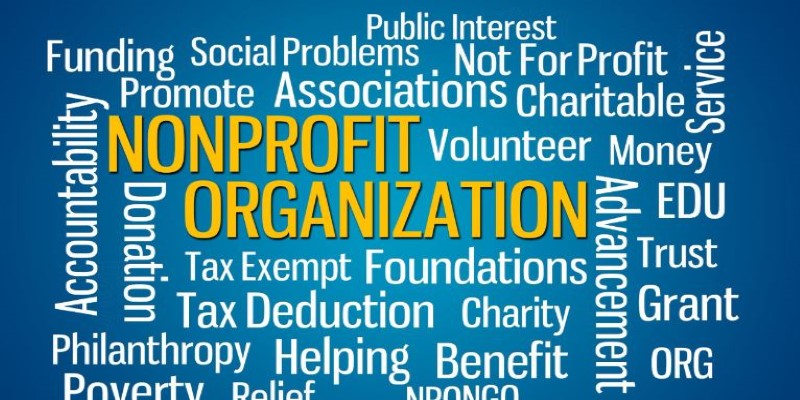What You Need to Know About Permanently Restricted Assets and Their Uses
Dec 13, 2024 By Sid Leonard
When you hear the term "permanently restricted assets," it can sound like something out of a financial textbook, filled with jargon that doesnt quite make sense. But in reality, the concept is more straightforward than it seems. These are assets that come with legal restrictions preventing them from being easily accessed, spent, or sold. The reason behind these restrictions often relates to specific rules tied to donations, grants, or trust agreements, ensuring that the asset is used for a designated purpose in the future.

It is essential to understand the dynamics of permanently restricted assets, whether for individuals or institutions. Whether the nature of the nonprofit is dealing with donations or an investor checking out long-term asset management, the reason for their know-how of these restrictions unclouds confusion when deciding the usage of money and property. In this paper, we shall try to learn more about what permanently restricted assets are, why they exist, and how they impact financial planning.
What Are Permanently Restricted Assets?
Permanently restricted assets are those that, under stipulations tied to them, could not be sold, converted into liquid cash, or used for general purposes. Commonly obtained from some outside agency in the form of a donor or grant provider, the legally enforceable stipulations would prevent this from happening.
The most evident example of permanently restricted resources is funds donated to a nonprofit organization. For instance, a donor may give a sizeable contribution to a charity, but the money has to be invested, and the interest can only be used for the specific program. In that case, the principal amount would never be touched and spent, and one may only avail of returns. In this way, money keeps serving the cause for which it was donated ad infinitum.
Such restrictions can be placed on assets other than contributions or grants. Other types of assets may also come under permanent restrictions, such as property held in trust. The conditions surrounding a trust's use of its assets may include restrictions on selling, transferring, or liquidating property.
As can be seen from the above examples, legal or contractual obligations can also limit an asset. For example, a company's real estate is restricted either by zoning or legal restrictions on selling or modifying it. Governmental authorities can even enact the restrictions.
How Do Permanently Restricted Assets Work?
Permanently restricted assets typically operate under conditions that ensure they cannot be accessed or used for purposes other than what they were originally intended for. The main goal behind these assets is often to protect them for the future, either for specific causes or for the benefit of future generations.

In nonprofit organizations, for example, permanently restricted assets are often used to ensure that donations serve long-term objectives. These donations might be used to fund scholarships, research, or educational programs. The original amount of the donation is preserved, but only the interest or earnings from the asset can be spent. This donates a lasting resource for the organization, ensuring that the donor's wishes are respected while also supporting the cause sustainably.
In the case of trusts, these assets may include investments, land, or other properties that are restricted by a legal agreement. The person who creates the trust (often called the grantor) imposes restrictions on how the assets are managed and used. For example, a family trust might include a restriction that only specific family members are allowed to access the assets or the assets might only be used for a particular purpose, like education or healthcare.
Why Do Permanently Restricted Assets Matter?
Permanently restricted assets play a crucial role in ensuring that certain resources are preserved and used responsibly. For nonprofits, these assets help to secure long-term funding for programs and services. Without these restrictions, funds could be spent quickly and without regard for the intended purpose. By placing limitations on how assets can be used, organizations ensure that the original donors intent is honored.
Permanently restricted assets can secure resources for future generations of individuals and families. Trusts are often used to ensure that wealth is passed down according to the wishes of the grantor. This helps prevent misuse or mismanagement of resources, giving the assets a chance to grow or be used for important causes over time.
These assets also provide a level of accountability and stability. Whether a donor wants to ensure their money is used for a good cause or a family aims to protect wealth for future heirs, these assets provide clear guidelines for how funds and properties should be handled.
The Legal Implications of Permanently Restricted Assets

Permanently restricted assets come with significant legal responsibilities. Whether the restrictions arise from a donor's conditions, a trust, or a contract, parties must strictly follow the governing rules. For nonprofits, failing to comply with donation terms could lead to legal consequences, including losing funds or incurring penalties. Similarly, trustees must manage trust assets according to the specified terms, and any misuse or non-compliance can lead to breach of trust claims and legal action from beneficiaries. For individuals handling restricted assets, it's crucial to understand the legal implications and potential penalties for violations. Consulting with legal professionals is essential to ensure adherence to all conditions and avoid any legal complications.
Conclusion
Permanently restricted assets play an important role in ensuring that funds or property are used for specific, long-term purposes. Whether it's honoring a donors wishes, preserving wealth for future generations, or safeguarding funds for nonprofit causes, these assets provide stability and accountability. While restrictions limit access and use, they ensure that resources are protected and managed responsibly. By understanding how permanently restricted assets work, individuals and organizations can better plan for the future, ensuring that their resources are used effectively and in line with their original intent. These assets offer lasting value for future generations.








